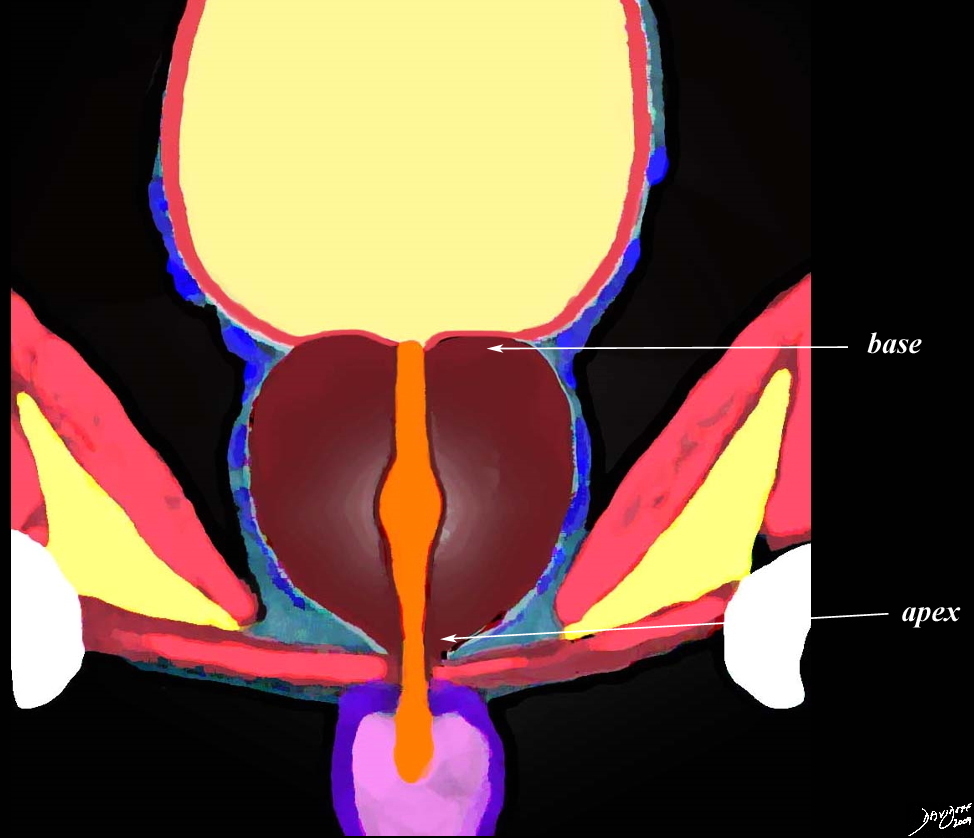Parts
The Common Vein Copyright 2010
Introduction
The parts that make up the extremes of the prostate as we have previously outlined are called the base and the apex. Because the superior aspect of the prostate is broader it is called the base and the since the inferior aspect is pointed aspect is called the apex. Note that the same orientation and nomenclature applies to the heart.
|
Prostate in Coronal Projection |
|
The diagram reflects a normal prostate (maroon overlay) seen in the coronal plane. The base of the prostate is that part of the prostate that lies superiorly and the apex is inferior. The bladder (yellow above), lies superiorly and rests on the base of the prostate ( maroon), which in turn has its apex resting on the pelvic diaphragm. The prostatic urethra (orange) traverses the middle of the prostate. The prostate has anterior, posterior, and lateral surfaces. The anterior surface is rounded, the posterior surface is slightly flattened and the lateral surfaces rounded as well. Courtesy Ashley Davidoff Copyright 2011 99651b14 |
The internal parts of the prostate that contribute to the zonal anatomy have embryological, histological and pathological significance. Each zone participates uniquely to the functioning of the gland.
The prostate appears morphologically simple on the outside but is complex internally at both the macroscopic and microscopic levels. The current concepts of its morphology have only evolved since 1968 after the work of McNeal. He suggested that the prostate was composed of three concentric zones that surround the prostatic urethra, and a fourth anterior zone.
The zones of the prostate include the central, peripheral and transition zones as well as an anterior fibromuscular layer.
The peripheral zone accounts for approximately 70%, central zone 20%, the transition zone about 5% and the anterior fibromuscular layer (zone) about 5%.
In the 19th century the prostate was seen as having 4 lobes; 2 lateral lobes, a middle lobe and an inconstant anterior lobe. In 1912 an inconstant posterior lobe was added by Lowsley. .
|
Zonal Anatomy of the Prostate in Transverse Plane |
|
The prostate gland can be viewed as having 4 major zones. In the young adult male the outer zone called the peripheral zone, accounts for 70% of the parenchyma. Inward of the peripheral zone is the central zone that accounts for 20% of the parenchyma. The periurethral zone is called the transitional zone and fibromuscular layer (anterior layer) share the remaining 10% of parenchyma Courtesy Ashley Davidoff MD Copyright 2010 25078b04b02L05L.8s |


